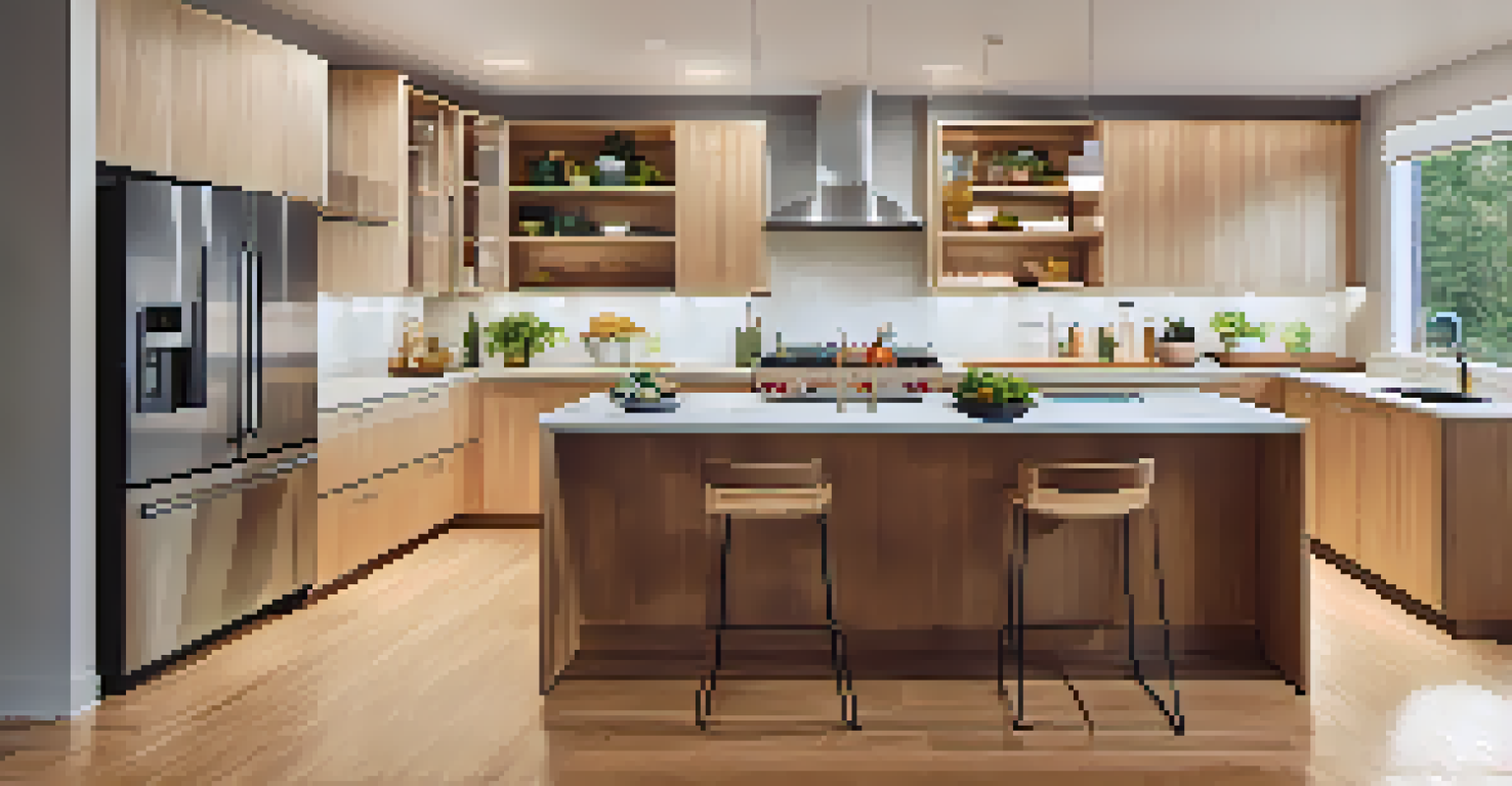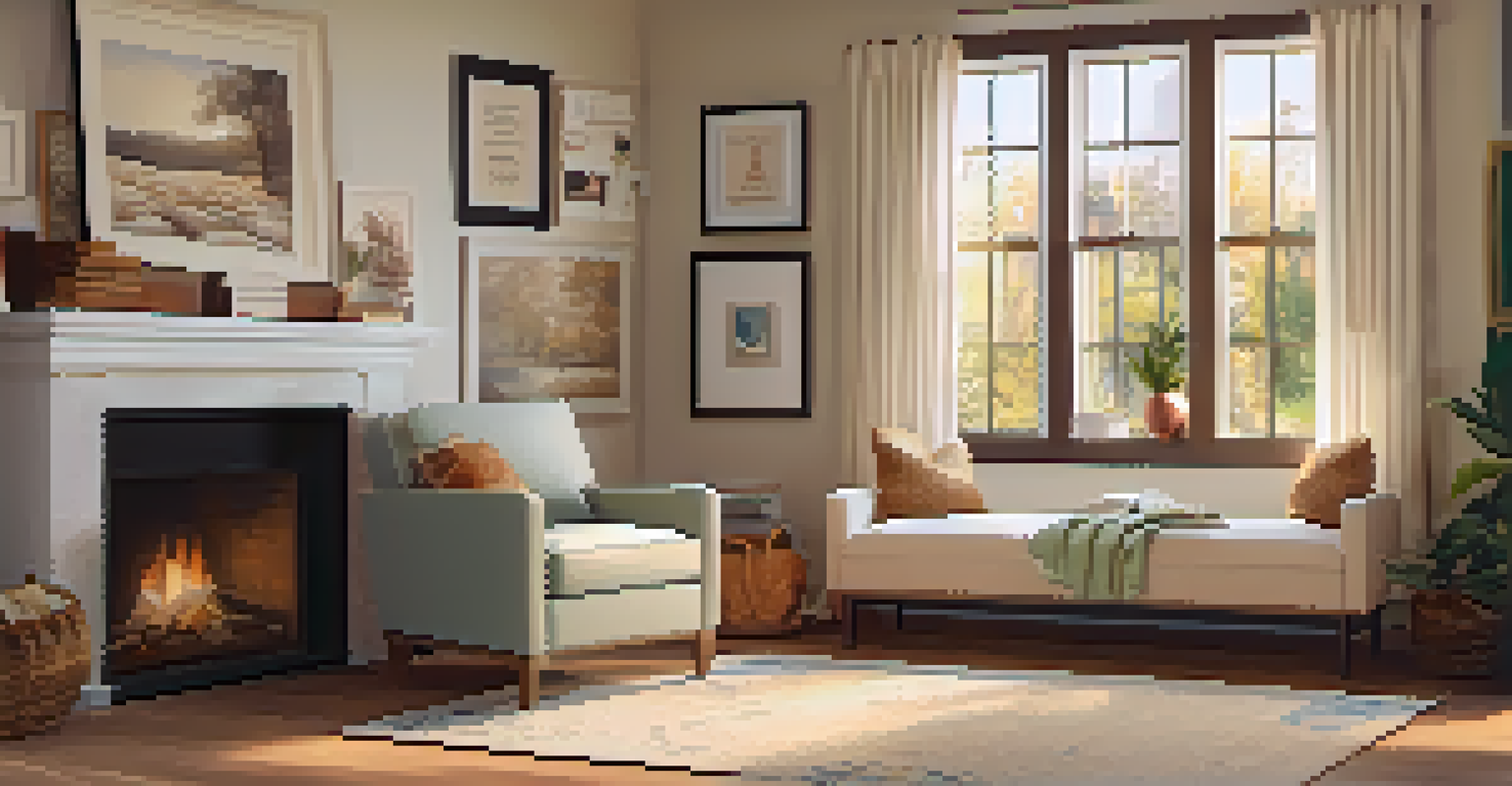Creating a Welcoming Atmosphere in Accessible Homes

Understanding Accessibility in Home Design
Accessibility in home design means ensuring that everyone, regardless of their physical abilities, can navigate and enjoy the space comfortably. This includes considerations such as wheelchair access, the placement of furniture, and the choice of flooring materials. By designing with accessibility in mind, you create an environment that fosters independence and dignity for all residents and visitors.
Accessibility is not a charity, it is a right.
Imagine a home that feels inviting not just for those with mobility issues, but for everyone. For instance, wide hallways and doorways might seem like a simple design choice, but they significantly enhance movement for parents with strollers, visitors carrying heavy bags, or anyone needing a little extra space. This universal design approach promotes inclusivity and harmony, transforming a house into a welcoming home.
Ultimately, understanding accessibility is the first step towards creating a welcoming atmosphere. It's about recognizing the diverse needs of your family and guests, and how thoughtful design can bridge the gap, making your home a place of comfort and relaxation for everyone.
Choosing the Right Color Palette for Comfort
Colors play a crucial role in setting the mood of your home. When selecting a color palette for an accessible home, it's important to choose hues that are not just visually appealing but also calming and easy on the eyes. Soft pastels and warm neutrals can create a serene atmosphere, making spaces more inviting and less overwhelming.

Think of color as the emotional backdrop for your home. For instance, a gentle blue can evoke feelings of tranquility, making it perfect for bedrooms, while warm yellows can bring a cheerful energy to communal spaces like the living room. The key is to create a harmonious flow throughout the home, where color transitions are smooth and comforting rather than jarring.
Embrace Accessibility in Design
Designing homes with accessibility in mind fosters independence and comfort for everyone, ensuring ease of movement and navigation.
Moreover, consider the needs of individuals with visual impairments when selecting colors. High-contrast combinations can enhance visibility and help create a sense of security and orientation within the space. By carefully curating your color choices, you’re not just beautifying your home; you’re also fostering a welcoming atmosphere that resonates with everyone who enters.
Incorporating Functional Furniture for Easy Access
Choosing the right furniture is essential in creating an accessible home. Look for pieces that are not only stylish but also functional, allowing easy movement and access for everyone. Adjustable-height tables, chairs with armrests, and open shelving can make a significant difference in comfort and usability.
Design is not just what it looks like and feels like. Design is how it works.
Consider the layout of your furniture as well. Arranging seating in a circular formation can encourage conversation while allowing for easy navigation around the room. Additionally, furniture with rounded edges can help prevent accidents, making the space feel safer and more accommodating for all guests, especially those with mobility challenges.
Ultimately, functional furniture is about blending practicality with aesthetics. By selecting pieces that serve a purpose while still enhancing your home’s design, you’re ensuring that your space remains welcoming and accessible for everyone, creating an environment where all can feel at ease.
Lighting: Brightening Up Accessible Spaces
Lighting is a vital aspect of any home, but in accessible designs, it takes on an even greater importance. Proper lighting not only enhances visibility but also helps create a warm and inviting atmosphere. Layered lighting, which combines ambient, task, and accent lighting, can provide both functionality and comfort throughout the home.
Imagine walking into a room where soft, warm lights greet you, illuminating pathways and highlighting beautiful decor without causing glare. This can be achieved through the use of dimmers, adjustable fixtures, and strategically placed lamps. By considering the needs of those with visual impairments, you can ensure that your lighting choices promote safety and accessibility.
Choose Calming Color Palettes
Selecting soft, warm colors not only enhances the mood of your home but also promotes accessibility for individuals with visual impairments.
Moreover, utilizing natural light can further enhance a welcoming atmosphere. Large windows, skylights, or light tubes can invite the outside in, creating a bright and cheerful environment. By crafting a well-lit home, you not only improve accessibility but also foster a sense of warmth and hospitality.
Creating Clear Pathways for Navigation
Clear pathways are essential in any home, particularly in accessible designs. Ensuring that there are unobstructed routes throughout the house can make navigation easier for everyone, especially those using wheelchairs or mobility aids. This means keeping hallways wide and removing excess furniture that could create obstacles.
Think of your home as a maze—would you want to navigate it if there were hidden traps around every corner? By maintaining clear pathways, you create a space that feels open and inviting, allowing guests to move freely without fear of bumping into something. This not only improves accessibility but also enhances the overall experience for anyone visiting your home.
Additionally, consider using visual cues to guide visitors through your space. This could include contrasting floor materials or decorative rugs that indicate different areas. By thoughtfully designing clear pathways, you’re ensuring that everyone can enjoy your home with ease and confidence.
Eco-Friendly Features for Sustainable Accessibility
Incorporating eco-friendly features into accessible home design not only benefits the environment but also enhances the comfort of your space. Sustainable materials, such as bamboo flooring or recycled glass countertops, can be both stylish and practical, creating a welcoming atmosphere while promoting a healthier living environment.
Consider energy-efficient appliances and fixtures, which can improve overall accessibility by reducing the physical effort needed to operate them. For instance, touchless faucets or smart home technology can help individuals with limited mobility manage daily tasks with ease. These features not only make life easier but also contribute to a more sustainable home.
Incorporate Functional Features
Utilizing functional furniture and eco-friendly elements creates an accessible and sustainable living space that is inviting for all.
Ultimately, creating a sustainable and accessible home is about making choices that benefit both the inhabitants and the planet. By integrating eco-friendly features, you’re fostering a welcoming atmosphere that reflects a commitment to care—both for your family and the environment.
Personal Touches That Enhance Welcoming Feelings
Adding personal touches to your home is a beautiful way to create warmth and a sense of belonging. These can include family photos, handmade art, or cherished memorabilia that reflect your personal story. Such elements invite guests to connect and engage, making your space feel truly inviting.
Imagine walking into a home adorned with thoughtful decor that tells a story about its inhabitants. This could be a gallery wall showcasing family adventures or a cozy reading nook filled with favorite books. These personalized touches not only enhance the aesthetic but also encourage conversations, creating a welcoming atmosphere for everyone.

Moreover, consider incorporating elements that celebrate the diversity of your guests. This could mean displaying art from different cultures or creating spaces that cater to various interests. By embracing individuality, you foster an inclusive environment that makes everyone feel at home.